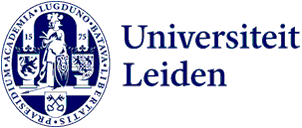Why is higher education not making more use of Open Educational Resources?
In higher education, Open Educational Resources (OER) are available for anyone to use, but they are not widely used. Marjon Baas, PhD student at ICLON, investigated how instructors deal with OER. Defence on 5 October.
Adaptations in higher education are needed to keep up with various social, technological and subject-related developments. Teachers use a wide range of learning materials in the process. Nowadays, many learning materials are available with open licences that can be reused by others: Open Educational Resources (OER). These materials are freely accessible to teachers and students and may be used, modified, and downloaded.
But despite the potential that OER offer for high-quality and accessible education, their use remains limited. Worldwide, there are several initiatives to promote usage, but many disappear after project funding ends. Marjon Baas therefore investigated the challenges of adopting OERs in higher education.

Support needed
A primary aim of this thesis was understanding more about how teachers value OER and what support helps them to reuse them. Teachers are only limitedly aware of the concept of OER. They need support in both finding relevant materials and using them in their own teaching.
Encouraging the reuse of OER appears to be most effective during the design phase of new teaching. Having a dialogue with colleagues about the value of relevant learning materials for their own teaching increases both awareness and a positive attitude towards OER. However, it is important that the library and ICT educators provide direct support around the practical aspects of reuse. In addition, it turned out that materials were sometimes not considered suitable because the examples in the material did not sufficiently match students' future fields of work. Or because the readability (too academic, too much text, English language) was insufficient. The possibility of adapting the material can be emphasised. For example, artificial intelligence can help to simplify English texts or translate them into Dutch.
Collaborating on OER
A second aim was to gain more insight into interinstitutional communities around OER. Baas followed a community in which 15 higher education institutions worked together to share learning materials and knowledge. For a community to be sustainable, it is important that user involvement does not decline once funding ends. Knowledge brokers play an important role in this. It is also important to make the value of the interinstitutional community transparent. Here, it is important to look not only at participants' perceived individual values (such as access to materials, help with issues, connection with colleagues), but also at public values (such as social justice, inclusivity, accessibility).
In Dutch higher education, much attention is paid to promoting the use of OER in order to achieve high-quality and accessible education. Baas' research provides institutions with tools to shape sustainable practices around the sharing and reuse of OER within the institution or within subject communities.
